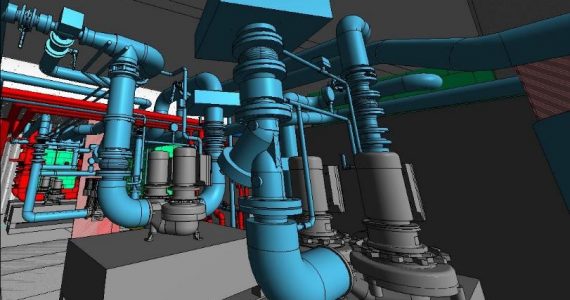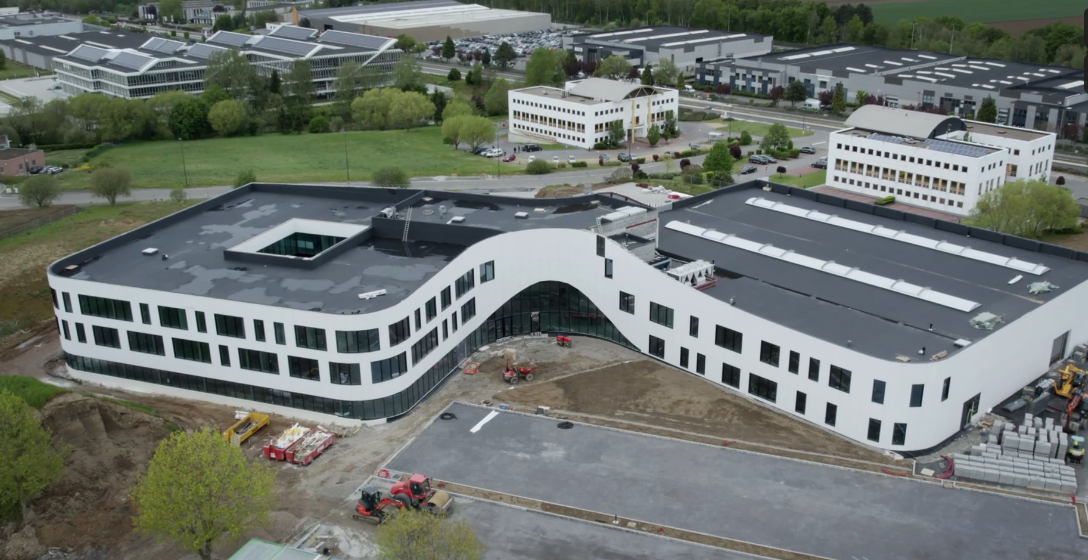
Using BIM to set up work sites
BIM Projects at VINCI Energies. Where are we exactly? What advantages and challenges are yet to come? Pierre Blanchet, Head of Innovation (Building Solutions), answered our questions.
When did BIM appear?
BIM (Building Information Modelling or building data modelling) first appeared over ten years ago, thanks to the development of 3D. Before, we used 2D drawings created with CAD (Computer Assisted Drawing) software, which made design and modification much faster compared to using the drawing board. The emergence of the digital model signalled the arrival of a new era. Today, the market is expanding rapidly.
But not all construction projects are suited to BIM. Its use is justified according to the complexity and size of the building, and particularly for new projects. I strongly recommend it for projects of over 10,000m2.
In addition, BIM is less developed outside of the Paris region, where it is used for 80% of large projects costing €2 3 million. Overall, however, the market is buoyant. BIM will probably become more widespread in the future.
What has changed with BIM?
Our working method has changed — we were used to drawing. With BIM, our way of designing has become more “object” oriented. That is to say, we now work with a library of 3D objects and each object has its own characteristics in terms of materials, dimensions, covering etc. The aim is to design a complete digital model that will be used to install equipment on site. This model is created by the architect then modified, adapted, completed and enhanced by the engineering consultants and companies until the As Built Drawings phase.
What are the main advantages?
The advantages of BIM can be summed up in four key points:
• Visualisation: BIM offers a mobile perspective that helps not only customers, but also designers and builders, to get to grips with an infrastructure.
• Anticipation: Detecting errors before work has even begun thanks to the overview, which aims to coordinate the different networks. It is therefore a powerful tool for monitoring project execution.
• Speed: At the construction phase, BIM speeds up understanding installations on site and allows us to foresee certain technical constraints. This makes the work site run more smoothly and means the building can be delivered more quickly.
• Communication: BIM is also a tool for communicating and sharing. Everyone involved in the construction project works on the same digital model, which facilitates the summary and communications work between the different participants.
Is there anything holding back BIM adoption? If so, what needs to be done?
The main things holding back BIM are training and cost.
It is currently difficult to find candidates with both good knowledge of buildings and an understanding of IT tools. We therefore need to encourage training because BIM is set to spread and we are sorely lacking in qualified personnel.
The cost will be a bit higher, especially in the intermediary phases where 2D still persists. But in air conditioning in the Paris region, there is no longer an additional cost for 2D or 3D.
Lastly, standardising modelling is still a major challenge, not only regarding the relationship between packages with the BIM work site charter but also the methodology for 3D object digitalisation.
What are the developments that are yet to come?
BIM is first and foremost used for the spatial organisation of equipment. But that’s not all. We also carry out thermodynamic simulations, power budgets, lighting notes and regulatory calculations. Over time, connections will be built between the 3D model and other design tools.
Did you like the article ?



